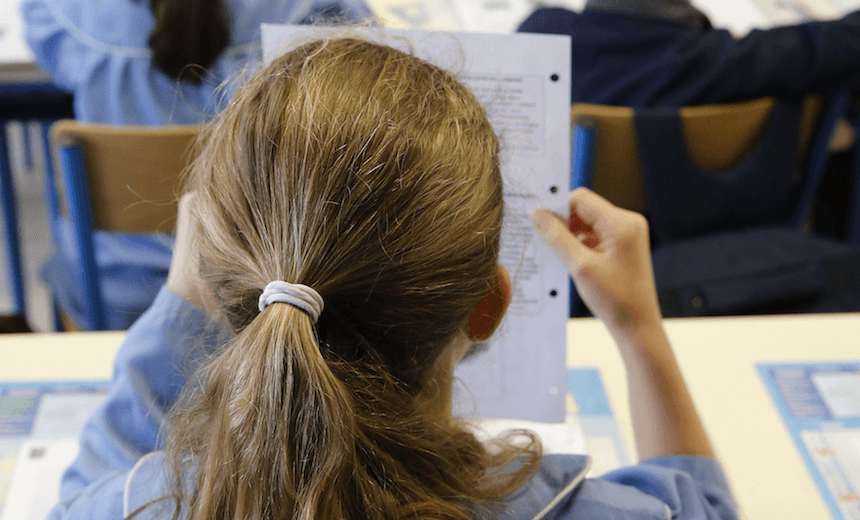Set by the previous government, a one-size-fits-all proficiency target simplifies a complex picture of school success. Martine Udahemuka of market-oriented think tank the New Zealand Initiative explains how the new education minister can improve on the current system.
With a new government comes opportunities to shake up a long-entrenched status quo.
Nowhere is this more warranted than in our schooling sector where fundamental aspects need urgent reform.
For too long, schools have been subjected to unfair measures of their success. But the new government can change this.
In 2012, the previous National-led government set a target that 85% of all 18-year-olds should have a Level 2 National Certificate of Educational Achievement (NCEA) or equivalent by 2017.
At a time when New Zealand’s performance in international comparison tests was in decline, it seemed a worthy goal to push for more youth to gain the high school qualification. It was a goal that then implicitly cascaded down to schools with an expectation to graduate the same proportion of students with the qualification.
Once the Ministry released school results, the media would then publish league tables ranking schools by NCEA pass rates.
But we know that some things are just not what they seem at first glance.
You may be familiar with the famous image depicting a swan from two viewpoints. The first shows a swan gracefully gliding on a lake. The second perspective, and one typically hidden from our view, shows the swan’s webbed feet fretting beneath the water.
A similar illusion applies to the landscape of school performance.
Against traditional benchmarks of performance, how school success appears on the surface can be vastly different from what is actually going on in the school.
A one-size-fits-all proficiency target like that set by the previous government on its own simplifies a complex picture of school success into a binary illusion: schools meeting the target appear successful while schools below it look unsuccessful.
But in essence, what we observe is to a degree a ranking of socioeconomic status. Schools in more disadvantaged neighbourhoods have, on average, fewer proficient students than schools in privileged areas.
The impact of disadvantage is clear and is in effect outside the control of schools.
A student’s experiences long before he steps in a classroom will have much to do with his pace of learning. Trying circumstances in the home such as parental unemployment can make it more challenging for their capacity to support their kids’ learning.
Unfortunately, though the previous government did well to establish the key factors that put students at a greater risk of failing in school, it did not use this information in its assessment of school success.
The newly sworn-in Government should progress the work further still and provide a more nuanced and fairer picture of school success.
What should the new education minister do?
National targets are instructive but not sufficient. Instead of expecting all schools to have the same year-end NCEA pass rates, education minister Chris Hipkins should judge academic success by comparing schools educating students from similar backgrounds.
Individual school performance targets should be evaluated in context. Illustratively, a school with 55% of students leaving with a Level 2 NCEA would have over-performed if its expected rate was 35%; conversely, it would have underperformed if its expected rate was 70%.
Taking the background factors into account would make it easier to identify superstar schools that exceed expectations as well as national targets. Exemplar schools that push their students far beyond expected outcomes, even if they do not meet national yardsticks, could also be identified and supported to share their practice more widely.
This way, coasting schools that meet national targets but still underperform relative to the potential of their students could also be supported.
In saying this, a few matters should be clarified.
First, acknowledging that some students are at a greater risk of struggling in school is not the same as having low expectations for these students. Instead, it means that students can be better supported and motivated to learn at their pace towards reaching their potential.
Second, acknowledging that out-of-school factors exist does not negate the work that needs to be done by relevant agencies to support families with disadvantages.
Finally, better information on school achievement wouldn’t be the be-all-end-all, but it would improve on the indicators we already have and form part of a suite of other sources of information about the quality of schools.
If we continue to judge school success from the binary perspective, we will miss opportunities to learn from exemplar schools pushing students beyond expectations and can equally miss the opportunity to support schools underachieving relative to their potential.
Providing information on the quality of schools is about providing school leaders with a meaningful barometer to inform and support their improvement strategies. It is also another source of information for parents wanting to know how a particular school is likely to support their child’s learning.
Perhaps the focus on out-of-context national goals conceals more than it reveals. Just as with swans gliding on lakes, we need to start looking below the surface of what is really happening in our schools.
It is high time school leaders doing the heavy lifting to give students an effective and quality education be treated fairly, and our new education minister has the opportunity to make this a reality.
Martine Udahemuka is a research fellow at The New Zealand Initiative working on education policy.

